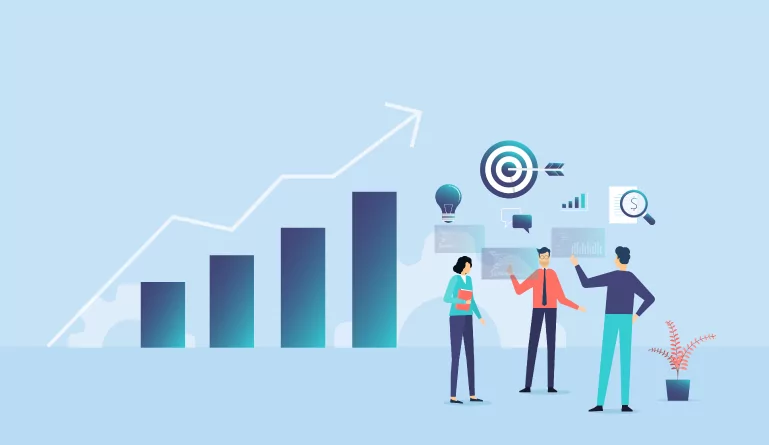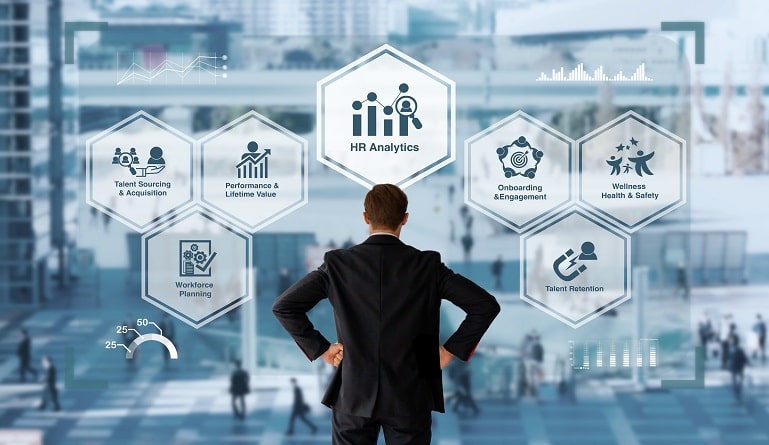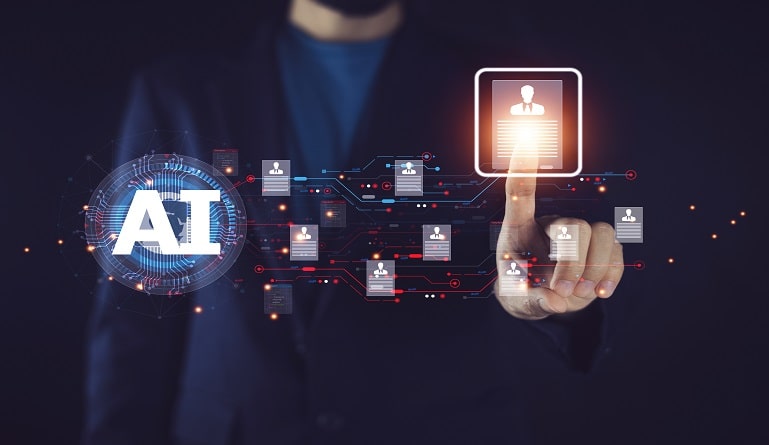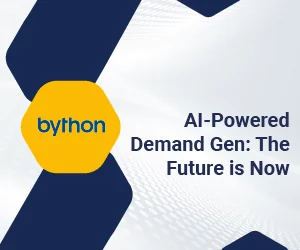People analytics is defined as a data analytics technology that harvests, processes, and transforms HR as well as organizational data to generate insights useful for solving business problems of all kinds. People analytics is a fast-maturing area of HR tech, yet only 13% of organizations are very good at it. How can you make the most of people analytics in 2023? Here are the top 10 trends to watch:
1. Talent acquisition and retention emerges as a key problem for people analytics
The pandemic transformed several things about the way we work — including what employees desire from their professions, resulting in unprecedented numbers of workers quitting or switching positions. CEOs depend on people analytics to derive insights about the labor market, simulate scenarios for retaining their top talent, identify risk factors utilizing predictive models, and assess the efficacy of initiatives.
People analytics also provides a competitive advantage when it comes to sourcing new employees by offering data and business intelligence. One instance of this people analytics trend is showcasing how to use internal talent to cover essential roles and skill shortages — through internal marketplaces.
2. People analytics will help stay competitive amid the potential recession
When executed effectively, workforce planning saves the organization millions of dollars by forecasting future skill requirements and emerging labor expenses. It also prepares them in acceptable and necessary areas while controlling current expenses.
When businesses tackle skills shortages (as an interim during layoffs to prevent overhiring), they are actually shifting paradigmatically — towards becoming a skills-based organization instead of being a capacity-based one. This people analytics trend can assist businesses with long-term personnel planning, the redesigning of work, and an emphasis on growth-oriented competencies.
3. Closer synergies between people analytics and the CHRO
With the challenges CEOs encounter today, the CHRO expects the people analytics function to work closely with them as trusted advisers to assist the C-suite in managing complex business problems. The number of executives in people analytics who report to the CHRO or the HR steering committee is increasing, leading to more accountability and impact for people analytics.
In order to gain access to C-suite leaders and general managers, closeness to the CHRO and winning their trust and confidence are essential. This, in turn, enhances the likelihood of targeting people analytics on the most pressing issues, above and beyond only HR concerns.
4. People analytics will become increasingly automated
Prior to just a few years ago, HR practitioners were required to master various programming languages and abilities in order to perform routine tasks such as integrating two datasets in warehouses. Today, there are one-click solutions for pulling data via Greenhouse, Orgnostic, or their competitors, enabling the development of data systems with a recognizable and familiar user experience.
The need for excessively technical expertise is changing due to this people analytics trend, and equality of access to HR requirements will make work better across the board. HR teams, for example, can now ask and answer questions like “I could really use a database containing my HRIS as well as ATS data” — with only a few mouse clicks.
5. People analytics will be an important tool in combating the “psychological recession”
During the 2008 recession, the term “psychological recession” came into use for the first time, and a number of the same fears are prevalent in businesses today. This leads us to concerns over disengagement that may arise from this. The next stage for a business is to conduct a comprehensive analysis of employee satisfaction, mental well-being, and overall physical health to evaluate impacts and future interventions. Here’s where people analytics may be helpful.
Consequently, an important future trend in people analytics will involve the notion of psychological recession – i.e., an emotional condition induced by anxiety resulting from international events, like the pandemic or concerns around the economic climate, among others.
6. The people analytics data boom will go hand in hand with privacy concerns
Organizations currently want to assess important employee experience metrics and trends without being overbearing or intrusive. This necessitates solutions for people analytics that capture data without jeopardizing employee privacy. Businesses must ensure that only certain individuals can access personal data via role-based access restrictions and approvals.
Both confidentiality and data security must be subjected to rigorous supervision. This is problematic when different nations (or regions) have differing legislative constraints on the types of data that organizations are legally permitted to collect. Hiring an HR data expert can assist businesses in staying ahead of this people analytics trend.
7. People analytics will no longer be a generalist, umbrella term
An important people analytics trend is the rise of specialized categories such as:
- Assessment analytics
- Employee Listening
- Employee text assessment
- Labor as well as talent market intelligence
- Relationship intelligence
- organizational network analysis (ONA)
- Human resource management with organizational design
Investing in these technologies enables people analytics departments to provide organizations with answers to immensely complex business issues. One example is the use of ONA with collaboration analytics to comprehend “actual” organizational networks and the impact of workers on one another. Highly specialized tools will make it possible to solve real issues and therefore garner better ROI from people analytics.
8. Personalization of analytics will make way for employee-centric products
The personalization of people analytics shifts the ideal user away from HR or organizational decision-makers alone to the employees themselves. These products play a significant role in enhancing employment opportunities in areas such as career progression, succession planning, and learning. For instance, the people analytics team can assist in the development of a vacancy recommendation service that encourages employees to apply for relevant internal openings.
9. People analytics will be harnessed for greater diversity, equity, and inclusion (DEI)
DEI is becoming more relevant than ever before, both as an organizational principle for fostering a safe and creative workplace culture and also as a strategic economic advantage.
Diversity, quality, and inclusion (DEI) initiatives are now at the forefront of every company’s thinking for numerous reasons. It has been proved that a diverse staff boosts company morale, productivity, and profitability. In addition, the pandemic had disparate effects across demographic groups, which organizations are attempting to rectify.
People analytics may provide a more comprehensive view of the problem. You may examine the diversity of your management team as well as the wide range of individuals entering or exiting, and the reasons for their departure. You may begin to notice where things are working well across groups and where you may need to increase your efforts to promote DEI.
10. People analytics will become a staple rather than a niche
CEOs today face challenges unlike ever before. Rising inflation, geopolitical instability, and pandemic-driven long-term transformations are creating a range of challenging scenarios. Globally, business executives want fresh perspectives on the following human factors: culture, inclusivity, mental wellness, salary inflation, retention, and talent shortages.
This opens up enormous potential for people analytics teams to generate value and is a significant factor in the proliferation of this technology.
Final Thoughts
In the end, people analytics provides insights that enable the CEO, their core team, and the board to place greater emphasis on the “social” aspects of ESG (environmental, social, and governance). This helps to improve outcomes for their selected stakeholders, workforces, communities, and, eventually, the world at large.
Today, getting started with people analytics is as easy as installing software platforms like Greenhouse, Visier, or their equivalents. Implementing people analytics correctly and keeping up with the relevant trends can help you make the most of the data you already generate and have sitting idle.







